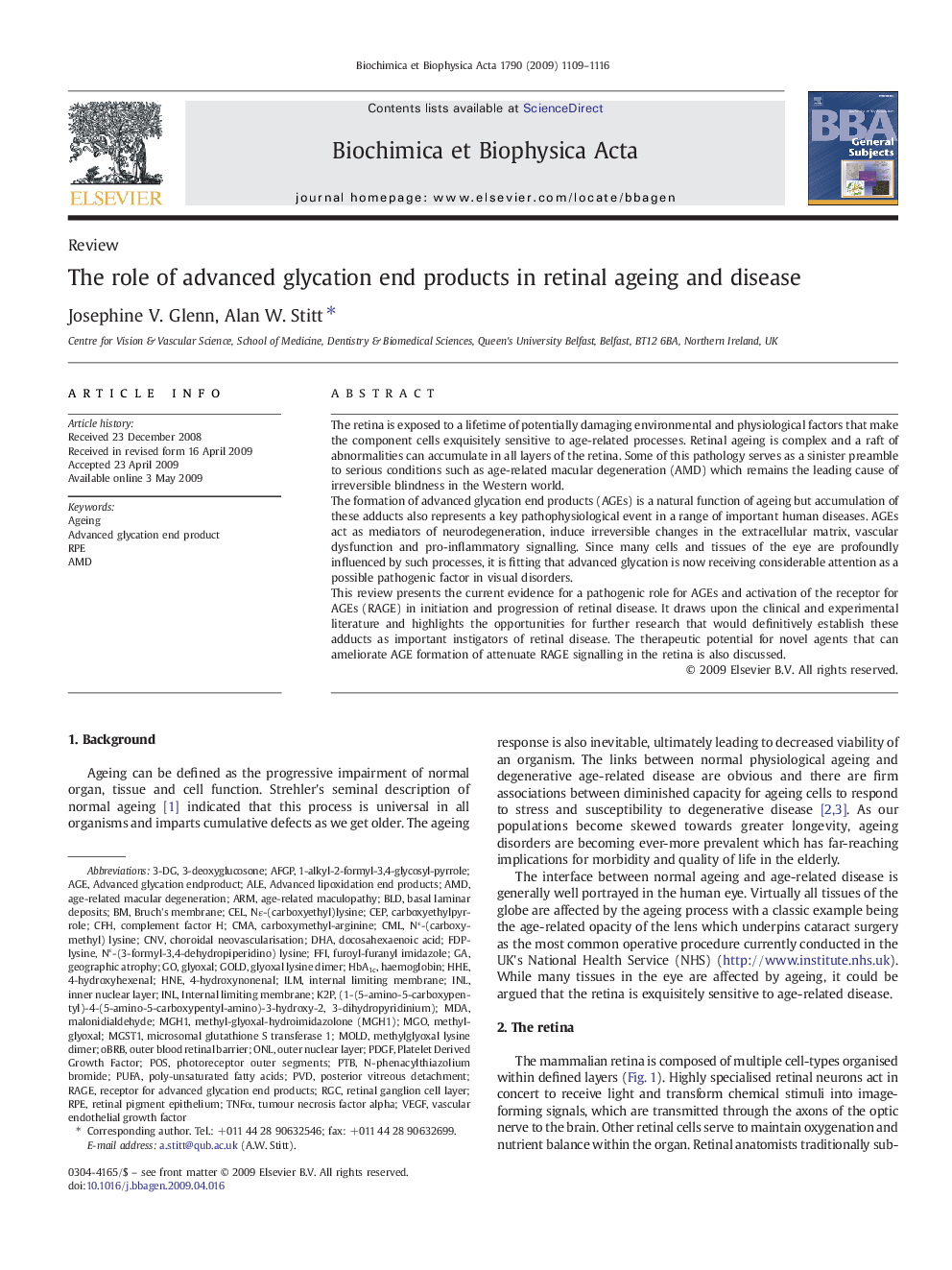| Article ID | Journal | Published Year | Pages | File Type |
|---|---|---|---|---|
| 1948082 | Biochimica et Biophysica Acta (BBA) - General Subjects | 2009 | 8 Pages |
The retina is exposed to a lifetime of potentially damaging environmental and physiological factors that make the component cells exquisitely sensitive to age-related processes. Retinal ageing is complex and a raft of abnormalities can accumulate in all layers of the retina. Some of this pathology serves as a sinister preamble to serious conditions such as age-related macular degeneration (AMD) which remains the leading cause of irreversible blindness in the Western world.The formation of advanced glycation end products (AGEs) is a natural function of ageing but accumulation of these adducts also represents a key pathophysiological event in a range of important human diseases. AGEs act as mediators of neurodegeneration, induce irreversible changes in the extracellular matrix, vascular dysfunction and pro-inflammatory signalling. Since many cells and tissues of the eye are profoundly influenced by such processes, it is fitting that advanced glycation is now receiving considerable attention as a possible pathogenic factor in visual disorders.This review presents the current evidence for a pathogenic role for AGEs and activation of the receptor for AGEs (RAGE) in initiation and progression of retinal disease. It draws upon the clinical and experimental literature and highlights the opportunities for further research that would definitively establish these adducts as important instigators of retinal disease. The therapeutic potential for novel agents that can ameliorate AGE formation of attenuate RAGE signalling in the retina is also discussed.
